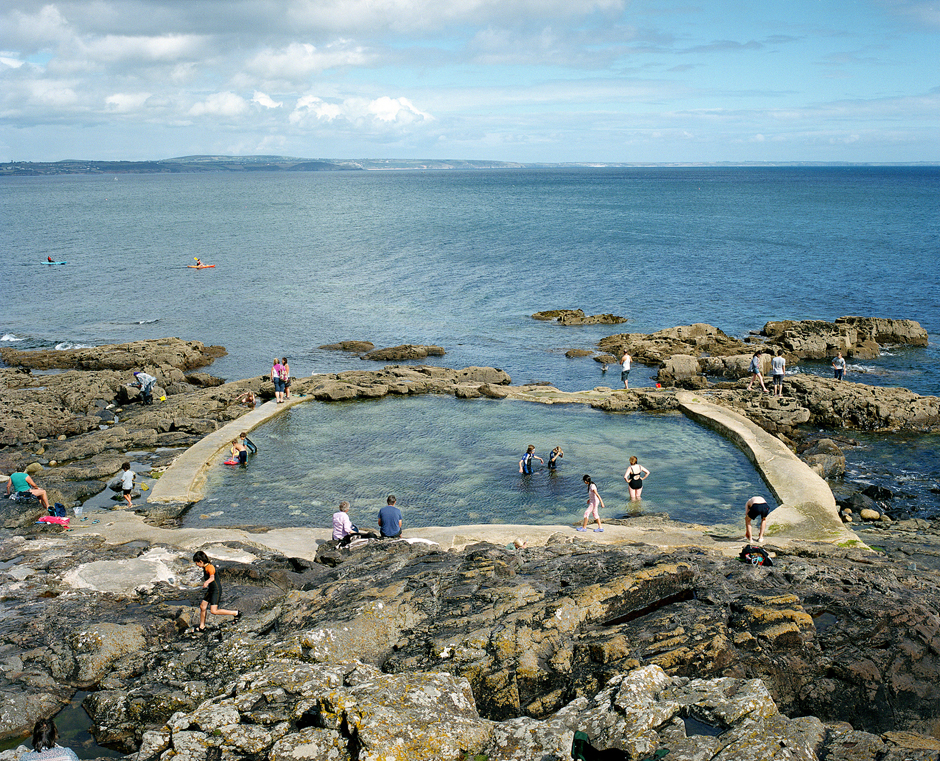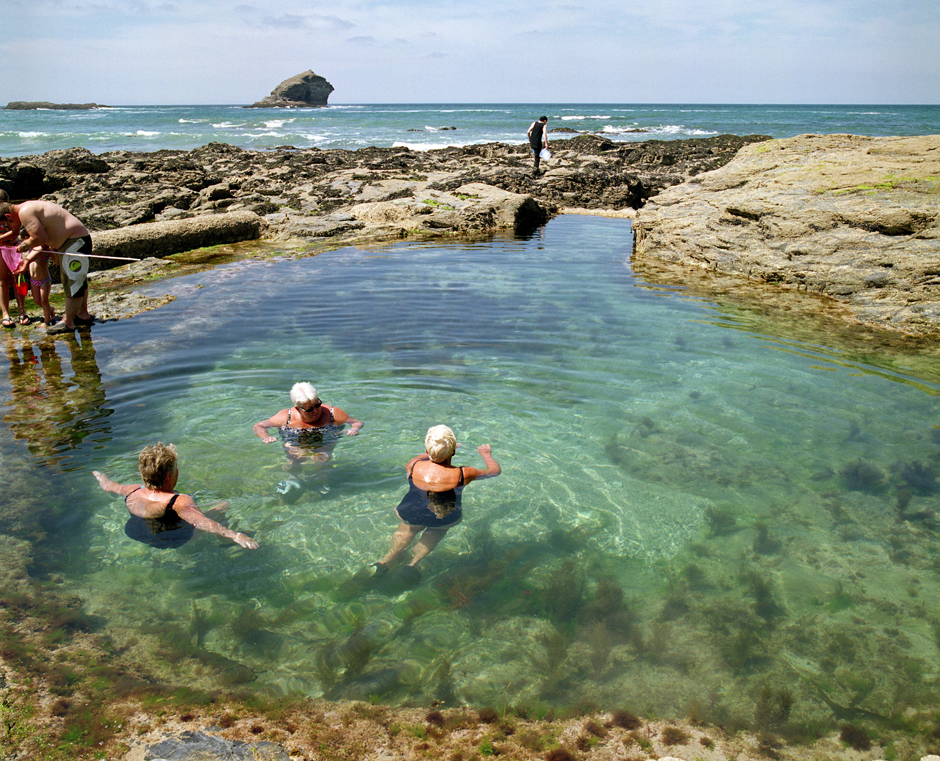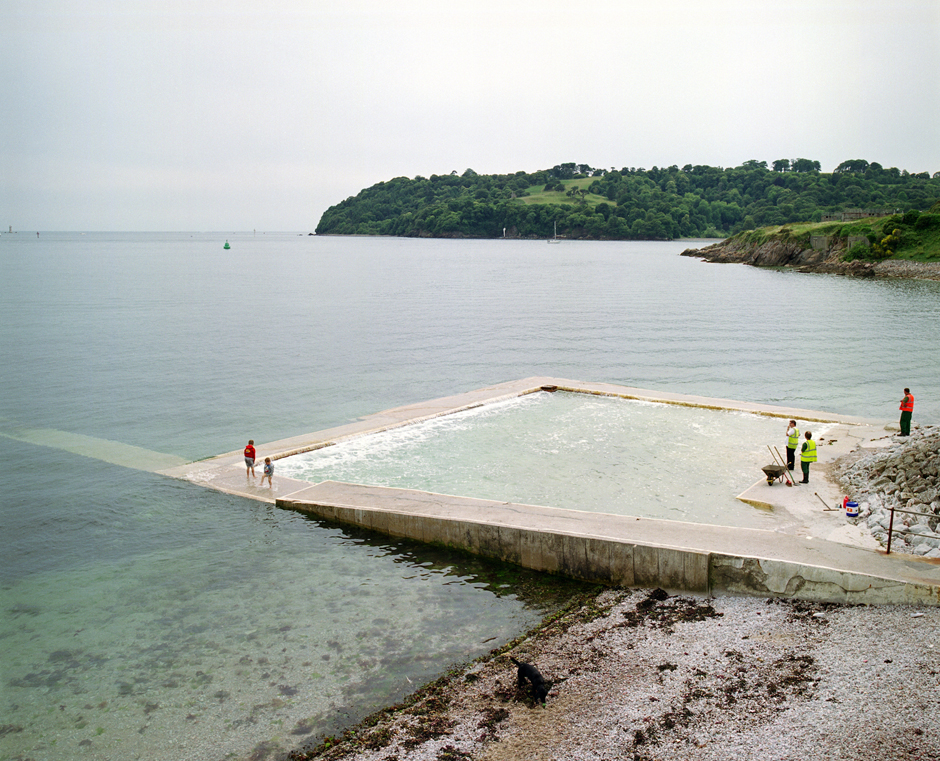Tidal Pools
These images are from an ongoing series about tidal swimming pools along Britain’s coastline. The project grew out of my interest in different landscapes and how they are shaped by human activity; the incongruous nature of the concrete structures in the natural coast environment. As Kate Rew observed in her book ‘Wild Swim’, until the 1950s and the rise of the heated indoor swimming pool, children learnt to swim outdoors – “many in rivers with sectioned-off learner pools, or at the hands of people who kindly took it upon themselves to chuck children into the village pond until they learned to float.” For those close to the sea, many man-made tidal swimming places were constructed around Britain’s coastline. Heated by the sun, these tidal pools were often built to keep bathers safe from high and rough seas, which explains why so many of them are clustered in Scotland and around the surfing beaches of Cornwall.
They might be simple swimming holes made by shoring up natural rock pools to grand lido-like pools complete with lifeguards and tea huts. All are refreshed by good high tides. They range from Dancing Ledge in Dorset, blasted into the rock to provide bracing exercise for pupils from a nearby prep school, to Chapel Pool in Polperro, Cornwall, a natural pool used by generations of children and which was dug out and made deeper in the 1920s. Today, around 30 tidal pools remain in use and it’s the simplest and least swanky that have best stood the test of time and tide. These secret places are cherished by small bands of hardy swimmers.











